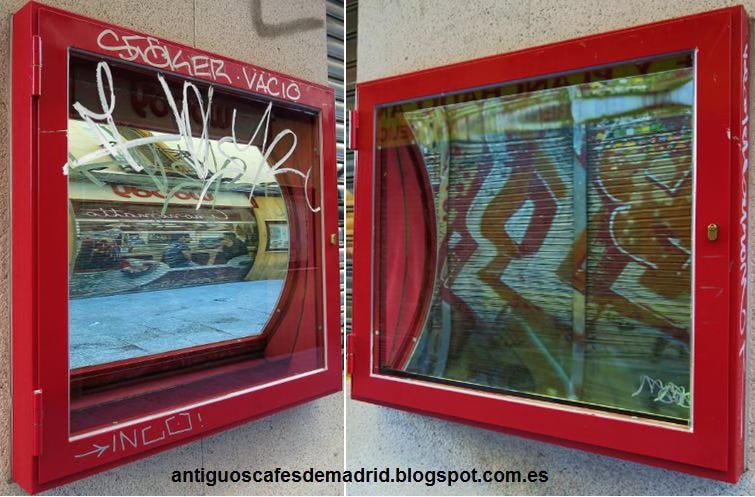A world of entertainment where amusement takes precedence, a world where culture is trivialized, and where journalism irresponsibly spreads gossip and scandal instead of information [1].
This is the civilization of the spectacle, which Peruvian novelist Vargas Llosa speaks of in his novel Notes on the Death of Culture (2012). Likely inspired by Guy Debord’s The Society of the Spectacle (1967), it shares similar sentiments throughout literature, philosophy, science and even technology - namely, that with the passage of time, things inevitably trend toward disintegration. Concepts it might evoke range from entropy and “enshittification” all the way to Plato’s Cave and Baudrillard’s simulacra in which things are as likely to decay as they are to deceive.
A lesser-known but equally interesting concept in a similar tradition is Spanish novelist Ramón María del Valle-Inclán's esperpento, a literary and theatrical approach that revealed the grotesque and absurd aspects of Spanish society at the time. But before diving into the concept, it’s important to understand the environment that engendered esperpento, and grasp the national mood it was capturing.
Spanish decline
The late 19th and early 20th centuries in Spain were marked by stark social inequalities and economic challenges. The nation remained predominantly agrarian, with 83–88% of the population living in rural areas [2] under the inefficient latifundio system. Also, industrial progress lagged far behind other European nations for a handful of reasons such as a lack of coal, transportation infrastructure and an internal market. This contributed to widespread poverty, high unemployment, and inflation.
The loss of its last remaining colonies (Philippines, Cuba and Puerto Rico) in 1898, during the decline of the Spanish Empire, resulted in a sense of humiliation and introspection on the national level. Traditional institutions such as the Church and the aristocracy were also in decline, though the Church still controlled much of the education system as Spain remained a confessional state, with a government-backed religion.
Politically, the 57-year Bourbon Restoration period, which separated the First and Second Republics, offered relative stability through the turno pacífico or turnismo system, where power between conservatives and liberals was alternated every two years. While effective in theory, this system was corrupt in practice, with local political bosses controlling elections in the rural areas, known as caciquismo, and systematic electoral fraud in the cities, known as pucherazo. Turnismo ensured that a top-down and centralist structure was maintained and meaningful progress was prevented.
Mirrors as a metaphor
Valle-Inclán, an early modernist and a member of the so-called Generation of ’98, portrayed Spanish society - particularly politicians and clergy of his time - in exagerated and unflattering ways. He believed that the deformed, sordid, and ridiculous national reality of Spain could only be accurately reflected through an equally deformed aesthetic. This critical stance, shared by the Generation of ’98, looked to confront Spain’s decline through cultural analysis.
To illustrate this idea in his play Luces de Bohemia, Valle-Inclán famously referenced the distorting mirrors of the Callejón del Gato in Madrid as a metaphor for his artistic approach. The fact that the mirrors were placed there, in the early 1900s, to attract clients to a nearby business perhaps reflects the psychological undertones of Spaniards at the time. A brief moment of escapism revealing underlying contradictions and a sense of alienation.
Max, one of the main characters of the play, says that esperpentismo was invented by Goya. The Spanish painter, who was from the previous century, lived through the Napoleonic invasion and the Spanish Inquisition, and his work reflects the corruption, violence and despair of the time. This connection suggests the possibility that the grotesque might be a recurring characteristic of Spain itself.
In Valle-Inclán’s novels, characters representing classical heroes are paraded before the mirrors, only to be reduced to absurd, distorted versions of their former selves. Inspired by figures like Don Juan, Othello, and even Homer, they lose their once-heroic stature, as Valle exposes their flaws and makes them laughable caricatures [4].
Conclusion
At the turn of the century, these representations reflected real meaning - an interpretation of the reality Spaniards were living through. Valle-Inclán’s depictions were an artistic truth that mirrored the fractures of the society he lived in. In our current era, with all the technological advances of modern society, the “authentic” is often staged and passed off as something real. In a world where people find love & validation through smartphones, follow trends in search of acceptance, and navigate through non-places, the lines between true and false blur even further.
In this sense, figures like Valle-Inclán are useful as interpreters of our manipulated realities. Just as esperpentismo revealed what was lurking just below the surface, we too should engage with the spectacles surrounding us and tease out the truths that belie them.
Sources
1 - Mario Vargas Llosa, La civilización del espectáculo
2 - Algunas consideraciones acerca de la evolución de la población rural en España en el siglo XIX
3 - Los espejos de la calle del gato
4 - Introducción a la vida y obra de Valle-Inclán




